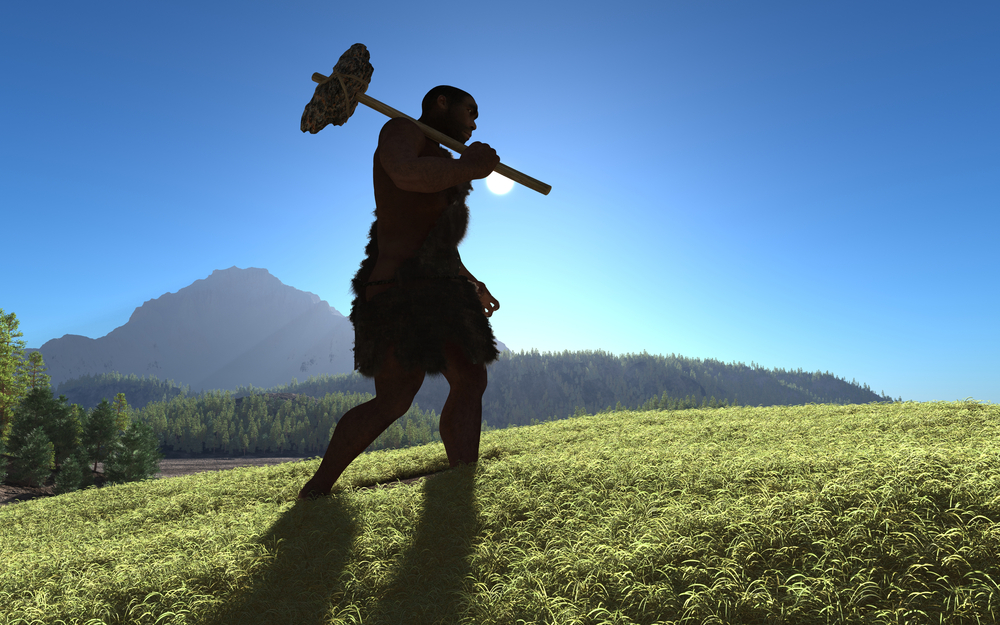Holocene Epoch: The Age of Man
The Holocene Epoch is the current period of geologic time. Another term that is sometimes used is the Anthropocene Epoch, because its primary characteristic is the global changes caused by human activity. This term can be misleading, though; modern humans were already well established long before the epoch began. The Holocene Epoch began 12,000 to 11,500 years ago at the close of the Paleolithic Ice Age and continues through today.
As Earth entered a warming trend, the glaciers of the late Paleolithic retreated. Tundra gave way to forest. As the climate changed, the very large mammals that had adapted to extreme cold, like mammoth and wooly rhinoceros, became extinct. Humans, once dependent on these “mega mammals” for much of their food, switched to smaller game and increased their gathering of plant materials to supplement their diet.
Evidence indicates that about 10,800 years ago, the climate underwent a sharp cold turn lasting for several years. The glaciers did not return, but game and plant materials would have been scarce. As temperatures began to rebound, human population began to increase and we began inventing the processes that would change the planet forever.
Agriculture takes root
Agriculture is one of the primary ways in which human activity has impacted the planet. By 8000 B.C., the cultivation of wheat, barley and other plants had spread from its origins in the Fertile Crescent through much of the Indo/European world. Domestication of sheep, goats and cattle began at about the same time. In Central and South America, the most commonly domesticated plants were maize, bottle gourds, squash and beans. Farming seems to have gotten a later start in Asia. Current evidence suggests that it may have been introduced to China by trade with Indo/European tribes, although it appears to have been common by the time of the start of the Shang Dynasty in about 1675 B.C.
Until the advent of agriculture and urbanization, the human population was largely limited by the same factors that limit other living organisms. Limiting factors in the environment, such as availability of food, water and shelter, evolutionary relationships like predator/prey ratios or presence of pathogens provide natural balances to populations. A population will generally expand until it reaches the carrying capacity, the maximum number of individuals an environment can support without detrimental effects, at which time it will level off. Continued expansion beyond the carrying capacity generally results in a crash (a rapid decline to a level far below the carrying capacity). If enough genetic diversity remains the population may recover; it may also become extinct.
Beginning about the first century A.D., humans began to sidestep these restraints. Agriculture had increased the number of people that could be supported by the environment; we were the first animals to increase the carrying capacity of our existing habitat. Population slowly began to rise. There were approximately 170 million people on Earth at the end of the first century; by 1800, the population was over 1 billion. The Industrial Revolution of the 19th century allowed human populations to grow exponentially. Industrialization, improved sanitation and medical care caused death rates to decline, while birth rates continued to climb in most parts of the world. Science has continued to help us increase the carrying capacity of the planet, but not the size of the planet.
Get the world’s most fascinating discoveries delivered straight to your inbox.
Holocene extinction
Pressure from the human population has had far-reaching effects on the biodiversity of the planet. Earth has undergone at least five major mass extinction events (times when at least 60 percent of extant genera became extinct within a span of no more than a few hundred thousand years.) Most people are familiar with the last mass extinction that closed the Cretaceous Period 65 million years ago and resulted in the extinction of the dinosaurs. Many scientists believe we are in the midst of a sixth mass extinction event caused by ourselves. Based on population numbers required to maintain genetic viability; it is estimated that as many as 30 percent of plant and animal species may become extinct within the next 100 years. Habitat destruction is the leading cause of species extinction today.
We have also had significant impacts on the geophysical characteristics of Earth. Monoculture (devoting large tracts of land to single crops) has affected the composition and fertility of the soil in most arable parts of the world. This effect has been ameliorated by use of chemical fertilizers, but has not been eliminated. Depletion of aquifers has reduced the availability of free fresh water.
We base our division of geologic time on evidence of changes in the life forms present on Earth in different times. In the past, global climate change has often been synchronous with mass extinction. Although there is some controversy about whether humans are part of the cause for the current global warming trend, there is no doubt that Earth is experiencing climate change. We may be nearing the end of the Holocene Epoch.
Related:



